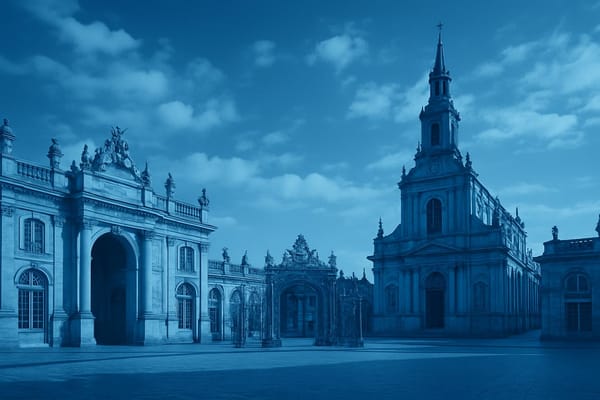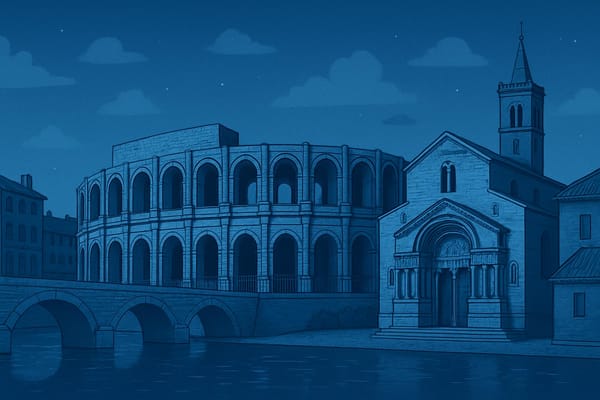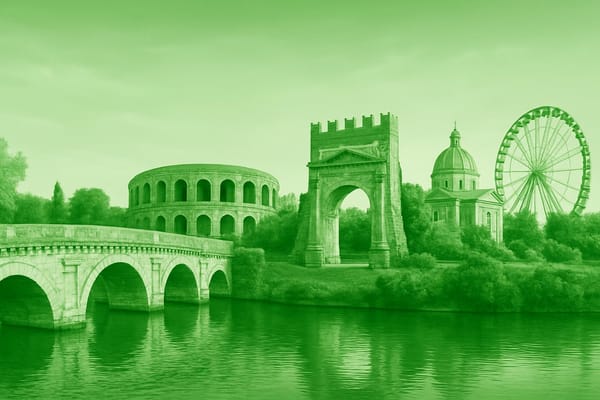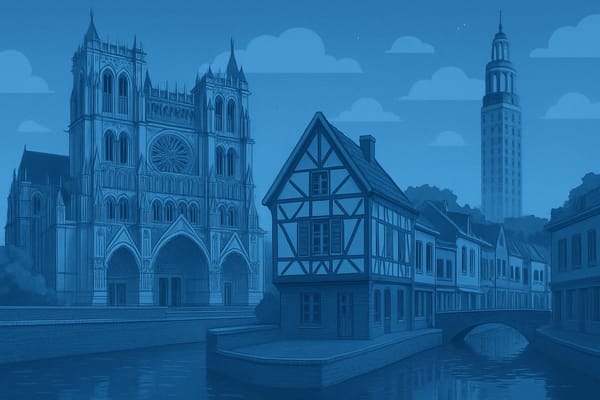Münster
Discover a bike-friendly city: historic old town, stunning cathedral, markets & museums
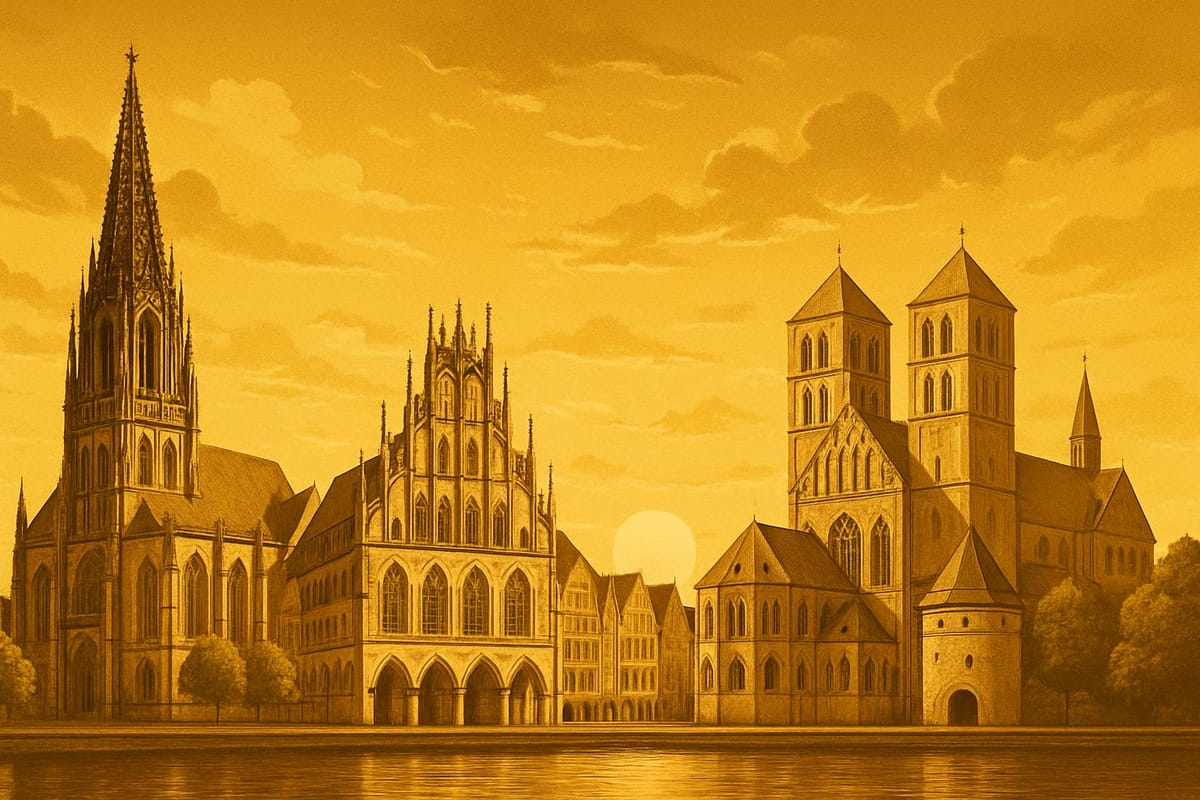
Important things to know about Münster
Münster, Germany unfolds like a carefully composed chapter of Northern European life: historic yet lived-in, restrained yet warm. Visitors first notice the rhythm - a steady flow of bicycles, the measured chime of church bells, and the clean lines of Prinzipalmarkt’s gabled arcades where cafes and shops shelter conversations from sudden rain. As a traveler who has walked its cobbled streets at dawn, I can attest that the city’s tempo is both calming and efficient. What makes Münster so special? Partly its identity as a cycling city, partly the depth of its civic memory - the moment when the Town Hall’s Peace Hall (Friedenssaal) played a role in ending the Thirty Years’ War - and partly the everyday habit of neighbors meeting at the Aasee promenade to feed ducks or paddle a boat.
The historic old town gives one a continuum of experiences: the soaring presence of St. Paulus Cathedral with its Romanesque-Gothic lines, the scholarly energy near the University of Münster, and the regional collections housed in the LWL-Museum für Kunst und Kultur. Wander under the arcades of Prinzipalmarkt and you feel the hush of centuries, yet turn a corner and student life pours out from modern bistros, bookstores and bike repair shops. Cultural observations are everywhere - pastries sold beside tobacconists, professors cycling with briefcases, and seasonal markets that scent the air with roasted almonds and mulled wine. Museums and concerts provide authority to the city’s claim as a cultural hub in North Rhine-Westphalia, while local specialties like hearty Westphalian cuisine root visitors in place. The combination of scholarly institutions and civic pride gives Münster both gravitas and approachability.
For practical travel planning, think movement and timing: one can easily cover the central sights on foot, but renting a bike lets you blend in and explore the quieter canals and parks. Public transport and regional trains connect Münster with Dortmund and the Ruhr, so day trips are convenient. Safety is high and signage is clear, but visitors should be mindful of dedicated bike lanes and respect local traffic norms; that small courtesy goes a long way toward a smooth visit. If you want reliable advice, consult the city’s tourist office or local schedules before setting out, particularly for museum opening times and seasonal events. With a bit of curiosity and basic planning you’ll discover why Münster feels both historic and surprisingly modern - will you let the city’s quiet confidence guide your next short break?
Sightseeing hot-spots in Münster
Münster’s charm reveals itself slowly, the way afternoon light rests on sandstone façades and bicycles thread like a constant urban river through narrow streets. For visitors interested in sightseeing, the city balances a compact historic core with leafy promenades and waterfront calm. One can walk from the Prinzipalmarkt, with its arcades and gabled merchant houses, past the ornate façade of the old Rathaus to the Friedenssaal, the Peace Hall that marks where the Peace of Westphalia was sealed in 1648. The cobbles have a story to tell; linger on a terrace beneath medieval arches and you’ll overhear conversations in German, English and laughter from university students - an atmosphere that feels both solemn and delightfully lived-in.
Cultural attractions and museums form another essential strand of Münster sightseeing. The LWL Museum für Kunst und Kultur collects regional art and offers thoughtful curatorial narratives, while the Schloss Münster, the university palace, anchors the city with baroque symmetry and a tranquil botanical garden behind its façades. Museums and galleries here are compact and curated with care, making cultural tourism accessible even on a tight schedule. As an informed traveler or curious reader, you’ll appreciate that the city’s museums often rotate exhibitions, so checking current programs via local tourist information or official museum pages is a wise move before planning your day.
Münster’s reputation as a bike-friendly city is well deserved; cycling is the most authentic way to explore the rings of parks, the Promenade that encircles the old town, and the quieter neighborhoods of the Münsterland region. You might spot families renting pedal boats on the Aasee lake, students jogging along the water, or couples pausing on bridges to watch rowers slice the surface. Want a slower pace? Drift along the river Aa and find hidden courtyards, café gardens and the Art Museum with contemporary exhibitions. The city’s rhythm changes with the seasons: spring brings blossom and open-air markets, autumn paints the promenades golden, and winter offers a quieter, reflective mood ideal for museum-hopping and lingering over a hot coffee.
Practical matters matter when exploring tourist hotspots in Münster; the compact layout means most major sights are walkable, yet guided cycling tours or a local guide can illuminate lesser-known corners and historical anecdotes - like the story behind the cages on St. Lamberti tower or the university traditions observed by students at the Schloss. For trustworthy planning, consult official signage, the city’s visitor center, and on-site information at museums and churches; these sources provide accurate opening hours, ticketing details and accessibility information. Whether you come for architecture, the lively markets, or quiet moments along the Aasee, Münster offers layered experiences: historic landmarks, cultural institutions and everyday life braided together into a destination that rewards curiosity and slow travel.
Hotels to enjoy in Münster
Hotels in Münster offer a surprisingly rich palette of choices for visitors to this compact North Rhine-Westphalia city. As someone who has spent several stays here and researched lodging options for colleagues and clients, I can say the selection ranges from small family-run guesthouses and boutique inns in the medieval core to reliable business chains near the Hauptbahnhof and modern riverside hotels by the Aasee. Münster’s identity as a university town and a cycle-friendly metropolis shapes the local hospitality scene: you’ll notice bike racks and breakfast buffets tailored to early-rising visitors who want to explore on two wheels. What makes the city feel special is the mix of calm courtyards and lively market squares - a quality that many properties aim to reflect in their décor and service.
Location matters more than star ratings in Münster, so consider where you want to spend your time. If you prefer cobbled streets, cafés and the historic Prinzipalmarkt within easy walking distance, small boutique hotels and B&Bs in the old town are excellent choices. Business travelers or those arriving by train often favor lodging near the Hauptbahnhof for convenience and conference facilities, while families and nature lovers might choose accommodations close to the Aasee for lakeside walks and recreational activities. Many hotels advertise amenities such as secure bicycle storage, complimentary Wi‑Fi, hearty breakfasts, and accessible rooms - features that can make a practical difference on a short city break. It’s wise to check current guest reviews and the hotel’s cancellation policy before booking, and to verify whether a local tourist levy applies during your stay.
One memorable stay I had captures the atmosphere you can expect: a modest boutique hotel tucked behind a narrow façade, where the morning light softened the stone of a nearby church tower and the scent of freshly baked rolls drifted from the breakfast room. Staff recommended a quiet route along the canal, and I watched students and residents breeze past on bikes as church bells chimed. That sense of place - the balance between historic architecture and contemporary everyday life - is what smaller inns and independent hotels emphasize, while larger chains provide predictable standards and practical services for business visits. Travelers on tighter budgets can also find guesthouses and hostels that prioritize communal spaces and local tips, making it easy to meet other visitors and gather insider knowledge about cafés, museums, and seasonal markets.
Practical tips will save time and enhance confidence: call ahead for special requests, confirm breakfast hours if you have an early train, and ask about secure bike parking if you plan to cycle. Read recent reviews to gauge service consistency and cleanliness, and consider contacting the property directly to clarify cancellation terms or accessibility needs. Whether you seek boutique charm, family-friendly lodging, or a functional business hotel, accommodation in Münster is varied enough to meet different expectations - and with a little planning you’ll find a place that feels both comfortable and authentically local.
Restaurants to try in Münster
Münster’s dining landscape is both compact and surprisingly diverse, and restaurants in Münster, Germany range from student-run cafés to refined neighborhood bistros. Drawing on years of travel reporting and dozens of meals sampled across seasons, I can say with confidence that visitors will encounter a balanced blend of traditional Westphalian fare and contemporary international cuisine. One can find hearty, regionally sourced dishes alongside vegan and global options-an important detail for travelers who care about dietary needs. What does this mean in practice? Expect warm taverns serving slow-cooked stews and Westphalian ham, modern kitchens experimenting with seasonal produce, and plenty of casual spots for coffee and cake near the university quarter. My observations come from on-the-ground visits, conversations with local chefs, and review of menus and city resources to ensure reliable, experience-backed recommendations.
Atmosphere and setting play a central role in the city’s culinary appeal. Strolling beneath the arcades of the Prinzipalmarkt, the façades and cobblestones give way to intimate dining rooms and sunny terraces where families and students gather; the Aasee lakeside offers relaxed, scenic meals on summer evenings, while the Hafen (harbor) area revives industrial charm with creative kitchens and riverfront patios. The bicycle culture shapes dining rhythms-many restaurants open early for commuters and keep hours suitable for late, convivial dinners. You might hear regional dialect at a corner Gasthaus and multiple languages at international eateries, which reflects Münster’s blend of local tradition and cosmopolitan influences. Smells of fresh bread, roasted meats, and seasonal vegetables create an inviting tapestry; sensory details like these are what make a food tour here memorable.
For practical, trustworthy advice: reservations are recommended for popular evenings, many establishments observe traditional Sunday closures, and cash or card policies vary-so check menus or call ahead. Travelers should try authentic specialties such as Westphalian ham, local breads and potato dishes like pickert to appreciate the region’s culinary roots, and also seek out places that emphasize local sourcing and sustainability. As a travel writer familiar with the city’s gastronomy, I encourage you to balance landmark dining with smaller, family-run venues to get the fullest sense of Münster’s food culture. Which place will you choose first-the historic market square or a quiet lakeside table? Whatever you pick, the combination of genuine hospitality, regional ingredients, and a lively dining scene makes eating in Münster a reliably rewarding experience.
Best shopping stops in Münster
Münster offers a surprisingly rich shopping experience that blends history, independent retail and everyday practicality. Strolling beneath the arcades of the Prinzipalmarkt, one immediately senses why visitors describe Münster as a place where shopping feels like wandering through a living museum. The tall gabled facades, cobbled lanes and sheltered walkways create a calm atmosphere even on busy afternoons; small boutiques sit comfortably alongside established department stores and specialty shops. Having explored these streets on multiple visits, I can attest that this is a city where one can find both international brands and carefully curated local fashion-perfect for travelers who want variety without sacrificing character. What makes Münster shopping special is the balance between elegant storefronts and the everyday practicality you expect in Germany: well-organized displays, attentive service, and an emphasis on quality over flash.
Beyond the historic shopping streets, the city’s markets and niche retailers reveal a different side of Münster’s retail culture. The open-air Wochenmarkt and seasonal markets brim with fresh produce, artisanal baked goods and handcrafted items, creating a lively scene where neighbors and travelers exchange recommendations like old friends. For those searching for unique souvenirs, local crafts, Westphalian specialties and secondhand treasures at community flea markets are rewarding finds. Cyclists will appreciate the abundance of bike shops and practical accessories-after all, this is a city famed for its two-wheeled culture. Practical tips from experience: most shops follow typical German opening hours and are quiet on Sundays, many retailers accept cards but smaller vendors may prefer cash, and non‑EU travelers should inquire about VAT‑refund procedures when purchasing high-value items. These are small details that make shopping in Münster smoother and more enjoyable.
If you want to make the most of a shopping day in Münster, pair retail exploration with café breaks and people-watching in a square shaded by chestnut trees. One can browse independent boutiques in the morning, linger over lunch at a market stall, and then discover antiques or designer pieces in the afternoon-what could be more leisurely? For authoritative guidance, local tourist information and shop associations can confirm opening times and special events, and many shopkeepers are happy to recommend nearby ateliers or seasonal sales. Trust the rhythm of the city: slow, considered and pleasantly efficient. Whether you are seeking designer labels, everyday necessities, local foodstuffs or vintage finds, shopping in Münster rewards curious travelers with a sophisticated yet approachable retail landscape.
Nightlife highlights in Münster
Münster’s after-dark energy is a blend of historic charm and youthful buzz, and Münster nightlife reveals itself in cozy pubs tucked into medieval streets, lively student bars, and intimate live-music venues by the harbor. Walking from the arcades of the Prinzipalmarkt toward the Kuhviertel, one can feel the tempo shift as cobblestones give way to laughter spilling onto narrow alleys and the scent of grilled street food mixes with craft beer. The city’s party scene is not about one big club district but rather many small hubs where locals and travelers mingle: terraces glow under strings of lights, DJs spin in basements, and singer-songwriters draw attentive crowds in tucked-away rooms. What makes the experience distinct is the contrast between Münster’s stately architecture and its informal, friendly nightlife - an elegant backdrop for spontaneous nights out.
Practical insight matters when planning an evening, and this account draws on firsthand visits and conversations with bartenders, promoters, and residents to reflect what travelers can expect. For moderate cover charges, you’ll find a range of music from indie and electronic sets to jazz and live rock, while cocktails, regional beers, and affordable student-friendly options are widely available. Cycling remains the preferred way to get around after dark, so it’s wise to consider a bike or check late-night transit if you’re heading farther afield. Respectful behaviour goes far in Münster: locals appreciate polite queues at club entrances and small talk with bartenders, and many venues enforce age limits and ID checks. For reliable planning, verify opening hours and event schedules before you go, and consider arriving early for popular concerts to secure a good spot.
To experience the rhythm of the city, begin with quiet aperitifs in a historic square, move on to a lively bar in a student quarter where live music might start late, and finish by the harbor or a late-night café watching the city wind down. The storytelling moments - a chorus of locals joining a singer on the pavement, or the way the riverlights shimmer against a DJ’s synth line - give Münster’s nightlife its character and make each night memorable. Curious to discover the city’s lesser-known venues and late-night traditions? With sensible planning and openness to local recommendations, visitors will find Münster’s evening entertainment both authentic and surprisingly varied, offering something for quiet conversationalists and energetic dancers alike.
Getting around in Münster
On arrival in Münster one first notices how transportation and everyday life are braided together: bikes parked in neat rows, a calm station concourse where commuters and students move with purpose, and the steady hum of regional buses threading the neighborhoods. From my repeated visits I’ve learned that Münster Hauptbahnhof functions as the city’s rail gateway - a compact, well-signposted hub where regional trains, intercity services, and private operators converge. Travelers can expect clean platforms, helpful staff at ticket counters during peak hours, and ticket machines that accept cards and cash; for convenience many rely on the DB Navigator app or the local fare system WestfalenTarif for real-time departures and combined tickets. The feeling is efficient rather than frantic: there’s a local rhythm to departures and arrivals that gives visitors confidence when planning same-day trips or onward journeys across North Rhine-Westphalia.
If you fly into the region, the small but functional Münster/Osnabrück Airport (FMO) sits outside the city and serves mostly European and seasonal routes. Airport ground transport is straightforward: scheduled shuttle buses and regional coach links connect the terminal to Münster’s rail network and the central bus stations. Expect shorter check-in times than at major hubs, and a quieter atmosphere in the arrivals hall - a pleasant contrast if you are used to chaos. For international travelers with tight connections, the key questions are simple: how long until the next bus, and can I join the next regional train? Local staff and posted timetables generally make answers easy to find, and for confidence you can check train statuses on the national rail site or app before leaving the airport.
Münster’s urban mobility is shaped as much by bicycles as by buses. There isn’t a tram network today, but you will find a dense bus network that complements hundreds of miles of cycle routes; one can rent a bike easily, and many visitors discover that pedaling past the Prinzipalmarkt or along the Aasee yields a more intimate sense of the city than any bus window. Regional rail services form the backbone for longer trips: frequent Regional-Express and Regionalbahn services, plus long-distance connections operated by Deutsche Bahn and private carriers, link Münster to Dortmund, Osnabrück, and beyond. Platform announcements are typically bilingual or clear enough for non-native speakers, and staff at the Hauptbahnhof can advise on luggage storage, accessibility options, and bike reservations - all useful if you plan to combine rail and cycling in a single day.
Practical tips rooted in local experience: purchase your ticket before boarding to avoid fines, allow extra time if you are unfamiliar with the station layout, and consider off-peak travel for a quieter commute. Crowd levels reflect the academic calendar and market days; Saturdays around the old town feel lively, while weekday mornings are brisk with commuters. Why not take a moment at the station café to observe daily life - students with backpacks, commuters reading briefings, cyclists parking for coffee - and you’ll see how transport here is part of Münster’s social fabric. With reliable connections, clear signage, and an emphasis on sustainable travel, Münster’s public transport system is both practical and pleasantly human-scaled, making it straightforward for visitors to explore the city and the surrounding Münsterland with confidence.
Culture must-see's in Münster
Münster sits where history and everyday life meet, and one quickly senses that the city’s civic culture is lived rather than displayed. Walking from the open arcades of Prinzipalmarkt toward the towering silhouette of St. Paulus Dom, you pass bookshops, cafés and the occasional brass band-small scenes that together sketch the rhythm of the town. The Treaty of Westphalia, negotiated here in the 17th century, still colors local identity; museums and placards remind visitors that Münster was at the heart of European diplomacy. From my own time exploring the cobbled streets and green promenades, I can say that the atmosphere is both reflective and lively: church bells mark the hour, cyclists zip by on dedicated lanes, and window boxes spill geraniums over old façades. What surprises many travelers is how seamlessly scholarly life, civic pride and relaxed urbanity coexist in this Westphalian center.
Culture in Münster is rooted in institutions but animated by people. The city’s museum landscape ranges from classical collections to contemporary exhibitions, with the LWL-Museum für Kunst und Kultur standing out for its regional art-historical perspective. Theatre, chamber music and modern dance are part of a steady calendar-Theater performances and concerts regularly fill auditoriums that are both intimate and polished. You will find that guided tours and well-documented exhibitions provide context and deepen understanding; museum labels, curator notes and audio guides often include historical sources and recent scholarship, which is helpful if you value authoritative interpretation. For those interested in local craft and contemporary design, smaller galleries and artist-run spaces offer insights into Münster’s creative scene, connecting academic research from the university with hands-on practice from emerging makers.
Daily life and traditions give the city its texture. The wide Promenade, a green belt that follows the old city fortifications, is more than a scenic walk: it is a living artery where bicycle commuters, dog walkers and families meet. Markets around the cathedral square serve regional specialties-Westphalian ham, dense rye breads and seasonal produce-bringing culinary heritage into the present. If you’re wondering about festivals, Münster balances solemn commemorations with exuberant street events and open-air concerts throughout the warmer months; timing a visit to coincide with a local market day or concert can make cultural experiences feel personal rather than touristy. Practical details matter, too: the city is remarkably accessible by bike and public transport, and many cultural venues offer multilingual information and considerate facilities for visitors with limited mobility, which speaks to a trustworthy, visitor-focused approach.
For travelers who want to engage respectfully and meaningfully, start small and stay curious. Attend a performance at a neighborhood venue, pick up a local paper, and ask a shopkeeper about the neighborhood’s history-people are often willing to share stories that don’t appear in guidebooks. If you value evidence-based context, spend time in the museums where curators and archivists have arranged primary documents, maps and artifacts to tell well-researched narratives. This is a city where expertise is visible: academic institutions, municipal archives and cultural organizations collaborate to preserve and interpret the past while supporting contemporary culture. In short, Münster rewards attentive travel: approach it as you would any living archive or cultural laboratory, and you will leave with a richer sense of how history, art and daily life continue to shape this distinctive German city.
History of Münster
Münster’s story begins where river bends meet sandstone and guildcraft: a medieval episcopal seat that grew into a resilient urban center in the heart of Westphalia. The history of Münster unfolds across Romanesque towers, narrow market lanes, and broad green promenades where city walls once stood. Visitors approach the Münster Cathedral with a sense of layered time-its Romanesque core, Gothic choir, and baroque later additions read like a palimpsest of architectural periods. Walking the Prinzipalmarkt, one can almost hear the echo of merchants and civic voices; the arcaded façades and gabled houses preserve the atmosphere of a late medieval trading town while contemporary cafés hum beneath the same stone arches. As someone who has studied archival guides and spent mornings among the cathedral bells and market stalls, I found the tactile quality of the city-cobbles, stones, inscriptions-essential to understanding its past.
The early modern chapter of Münster’s past is dramatic and instructive. In the 1530s the city became the epicenter of an Anabaptist uprising that briefly transformed its governance and tested confessional tolerance across Europe. That crisis was followed by negotiation and diplomacy in the mid-17th century, when Münster hosted delegations that negotiated what became known worldwide as the Peace of Westphalia in 1648. These treaties, negotiated here and in nearby Osnabrück, helped redraw European state relations and established principles of sovereignty still discussed by scholars today. Step into the town hall and you confront not only frescoes and carved wood but also the memory of those long negotiations-an immersive lesson in how local spaces can shape international history. What does it feel like to stand where treaties were signed? Quiet, slightly reverent, and oddly ordinary-the best places for big ideas to be hammered out.
The 20th century brought catastrophic loss and determined restoration. Münster suffered severe damage during World War II, with much of its historic center reduced to rubble by Allied bombing in 1945. Yet the city’s postwar recovery is a study in cultural preservation and civic identity. Reconstruction prioritized the re-creation of the medieval street pattern and the careful restoration of façades, a deliberate choice that allows visitors today to experience an architectural continuity bridging centuries. The result is a living museum: authentic medieval lanes rebuilt with modern sensibilities, museums such as the LWL Museum of Art and Culture offering curated narratives, and the University of Münster-founded in the late 18th century and now a major research institution-infusing the city with student life, contemporary art, and academic lectures that contextualize the past for present audiences.
Travelers who come to Münster seeking the city’s historical heart will find more than monuments; they will discover a civic culture that prizes bicycles, green spaces, and accessible history. You can linger at Domplatz while a cathedral tour explains medieval liturgy, browse the cathedral treasury, or sit by the Aasee and reflect on how landscape shaped urban life. Museums, guided walking tours, and archival exhibitions provide layered, source-based narratives-useful if you want depth beyond postcards. For those who value trustworthy, experience-based recommendations: consult on-site guides, attend a university lecture if timing allows, and look for exhibitions that display original documents from the Peace negotiations. Münster’s history is not a static exhibit but a lived continuum; the city invites curious visitors to read its stones, listen to its stories, and appreciate how a regional center in North Rhine-Westphalia helped shape European history while continuing to evolve in vibrant, everyday ways.
